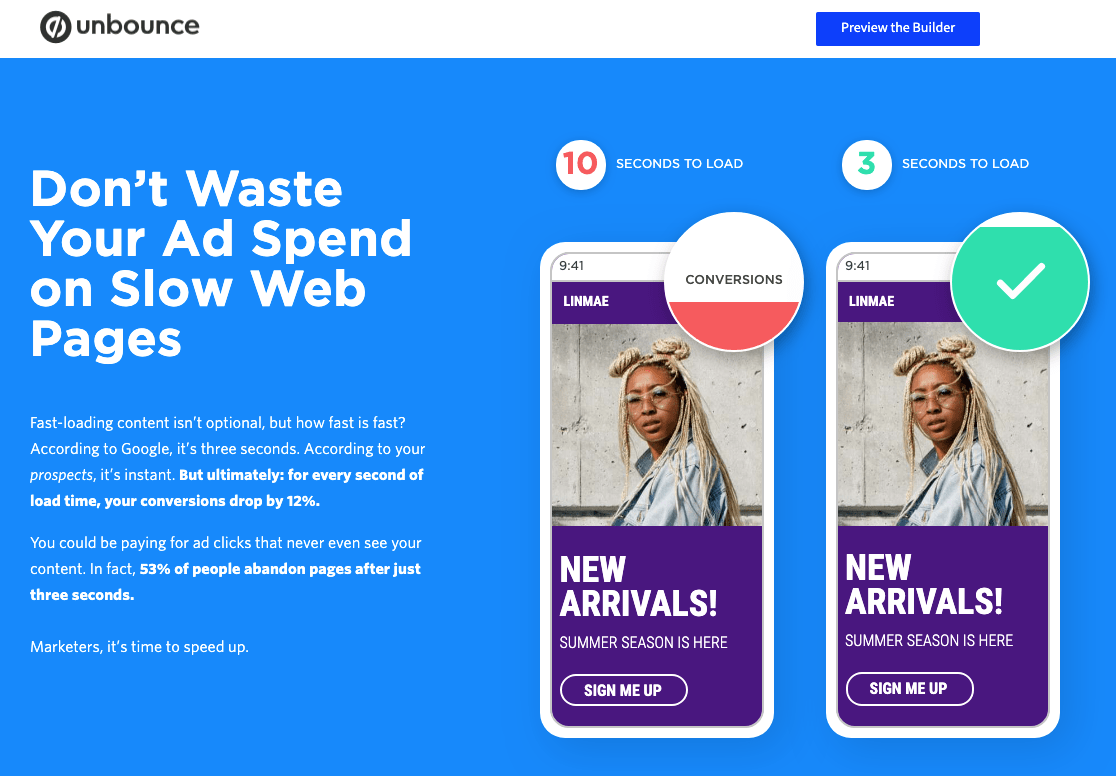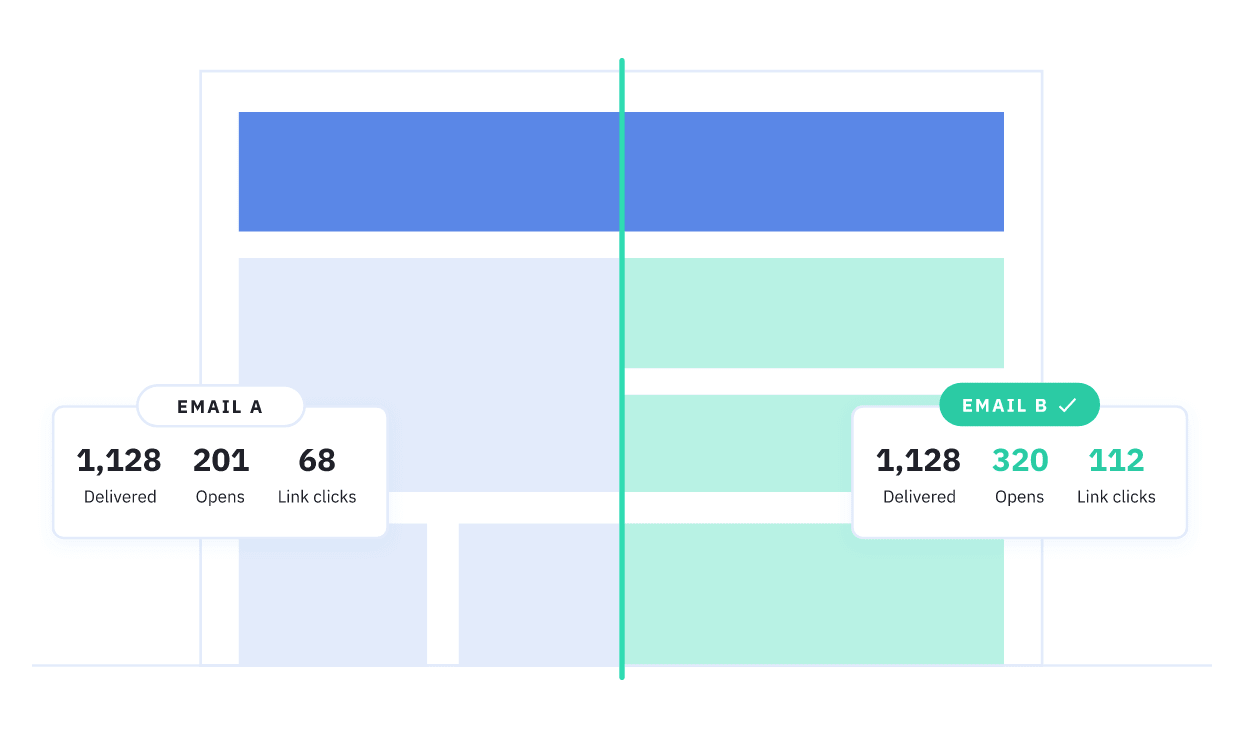Conversion rate optimisation (CRO) is one of the most important marketing strategies for modern brands. If you’re looking to make the most of your traffic and maximise ROI, then optimising for conversions is the obvious place to start.
It sounds like a sweet deal, too. Run a few tests and watch those conversion rates climb, magically turning your business into a more profitable venture without paying increase traffic – or, at least, that’s how CRO is typically sold.
Follow the tried and tested CRO best practices and it’ll all work out.
Except best practices don’t always work out and there are plenty of examples where widely accepted CRO principles can actually hurt your conversion rates and other KPIs.
Here are seven perfect examples.
#1: A/B test your way to success
When you first get into conversion rate optimisation, you’re keen to jump in and start testing changes to your website. You’ve seen all the case studies where changing CTA button colours has increased conversions by 300% and you want in on the action.
You want to run your first A/B test.
Unfortunately, while running tests is an important part of your CRO workflow, there’s often too much emphasis placed on A/B testing and not enough on what comes before/after it.

Before you start plotting your first CRO tests, you need to make sure the key parts of your site are receiving enough quality traffic. First of all, you need enough traffic that your tests will become statistically significant but you also need the right kind of visitors who are likely to convert and buy into your offer.
If your pages are receiving the wrong kind of traffic, CRO is essentially useless to you – so make sure you have the right inbound traffic before you start delving into tests.
Secondly, you also need to have the means to deal with a higher volume of leads after they convert. What’s the point of increasing conversions by 300% if your sales team isn’t capable of dealing with the increase in leads?
#2: Reduce friction to increase conversions
This is probably the most common misconception about CRO and also one of the most widely accepted “best practices”. Essentially, the theory is that the easier you make it for people to convert, the more of them will do so. And, while this is generallly a good principle to follow in terms of UX design, there are scenarios where friction is actually good for conversions.
Think about it: landing pages themselves add friction between clicking through to a website and completing a conversion. All that text, those images, scrolling, CTAs and button clicking increase the workload users have to do in order to complete an action.
Remove all friction from any page, you’re looking at a blank screen with nothing but a form on it – but that’s not going to convert.
The trick is knowing how and when to use friction to your advantage. For example, exit-intent pop-ups have been found to increase conversion rates from traffic that would otherwise leave. Live chat widgets also interrupt the user experience but this isn’t a problem if they help users find what they’re looking for. Likewise, asking users to sign up to your newsletter or create an account adds friction but it allows you to follow-up leads with more relevant messages.

Or, as shown this VWO case study, adding a page and increasing the number of clicks required to complete an action can actually increase conversions – in this case, by 60%.
So, instead of going on a frenzy trying to reduce friction everywhere you see it, learn how to use it. It’s actually a powerful tool for not only increasing conversions in certain situations but also crucial for increasing the quality of conversions – something too many CRO strategies overlook.
#3: Make your web forms shorter
This one is closely related to the idea of reducing friction and you’ll see this “best practice” recommended everywhere. Sadly, countless tests have proven that shorter forms reduce conversion rates and lead quality in all kinds of situations and blindly trying to make every form as short as possible is a bad idea.
Here at Venture Harbour, we’ve increased conversion rates by as much as 743% by using multi-step forms that allow us to ask more questions, get more data and increase lead quality without having a negative impact on the user experience.
More importantly, these multi-step forms are central to some of our most successful lead generation strategies. For example, we ask users more questions about what they need from us so we can score and segment leads. We’ve also used this format to create free online tools people can use and the multi-step process, once again, allows us to pinpoint which of these users are most valuable to us as potential customers.

There’s a time and a place for short forms but we would never be able to achieve these kinds of lead generation strategies by simply asking people for their name and email address.
#4: Place your CTA above the fold
This is another classic “best practice” that harks back to the pre-mobile days where pages were basically all designed for desktop screens. In the mobile age, people are used to scrolling and the idea that every page should have a CTA above the fold is outdated.
Pretty much every landing page these days has a hero section with a background image, a tag line/slogan and a CTA button.
Sure, this is a tried and tested formula that works in a lot of cases but is your offer really so strong that one sentence and a background image is going to convince people to click that button?
Are you sure?

As you can see above, productivity tool Conga doesn’t place a CTA in the main body of the page until way below the fold. This gives the company more space to explain its offer and differentiate its products in a crowded market before hitting users with a CTA button – if you can even call an “Explore all products” button a CTA.
Users reach the bottom of the page before they’re asked to fill out a form for their demo although there’s the constant presence of that “Get a demo” CTA button in the header for desktop users (this is hidden in the off-screen menu for mobile).
So don’t rule out placing CTAs below the fold if you need more space to get your message across. It all comes down to how much intent people have when they land on your page and how clear the message in your offer comes across. test variations with CTAs above and below the fold – you might be surprised by some of the results.
#5: Test those CTA buttons!
One of the biggest mistakes marketers make when they first get involved in conversion optimisation is focusing too much attention on their CTAs. I’m not disputing the importance of CTAs but there’s a whole lot more that goes into influencing someones buying decisions.
You could have the most optimised CTAs on the web and still get a pathetic conversion rate if your site is too slow to load, for example. Likewise, if the content users see before they reach your calls-to-action don’t inspire any purchase intent, they’re hardly going to click just because you tell them to.
An effective CTA is the final stretch in a long-distance race and your mission is to get users over the finishing line, but nobody wins an 800m race if performance was weak in the first 600m.
In conversion rate optimisation, everything that comes before the CTA is just as important, sometimes more so, than the CTA itself – so make sure you look beyond testing one element of your pages.
#6: Add testimonials, social proof
Social proof, testimonials and other trust factors are a staple ingredient of modern landing pages, designed to build trust between users and brands. Just about every landing page guide will tell you to use these but they don’t always result in higher conversion rates – as shown in this Unbounce article.

The original case study was published by a company called ContentVerve that no longer appears to be operating and it’s one of multiple studies showing trust signals can actually hurt conversion rates.

We’ve seen similar results from a DIYthemes case study where the variation of CTA outperformed its rivals and actually improved results over time. So don’t think trust factors are automatically going to increase your conversion rates – they can even plant seeds of doubt in users’ minds or distract from the message you’re trying to convey.
There’s one more twist in the first case study referenced above.

A third variation that reworded the guarantee below this sign-up form finally resulted in higher conversion rates. The lesson here is to ignore “best practices” that tell you adding X, Y or Z to your pages is automatically going to increase conversion rates.
How you add them to your page is just as important when it comes to influencing conversions.
#7: Higher conversion rates = more profit
Conversion rate optimisation is a poorly named practice because it puts all of the emphasis on conversion rates. I would much prefer to hear marketers talk about performance optimisation or something more inclusive that considers other aspects of successful marketing.
The simple fact is, higher conversion rates don’t necessarily result in more profit – and this is what really matters.
You can optimise your pages to generate millions of conversions but what does it matter if only 3% of those end up becoming customers? That’s a lot of time and money to pump into CRO for a modest return. The quality of your conversions is far more important than the quantity and there comes a point where higher conversion rates mean you’re compromising on quality.
Your priority in CRO should be maximising conversions from users who are going to complete your marketing objectives. Above all, this means people who are going to buy from you, not simply download your free e-book and never interact with your brand again.
This is one of the key reasons why adding friction in the right places is important. It helps you filter out low-intent prospects who are unlikely to go the distance and it also gives you the opportunity to gain more information about them, which you can use to score leads and prioritise those most likely to do business with you.
Keeping best practices in context
There are some best practices that should be followed at all times – such as using high-contrast because the human eye struggles to see low-contrast elements. However, most of the “best practices” talked about in CRO conversations are anecdotal tactics that have worked in the past – not always, just enough times to give them traction.
I some cases, they’re simply selective findings from companies that are pushing their own products or services.
Best practices are genuinely useful if you take them on board and consider them in your design choice but they’re not rules in some guidebook to be meticulously followed. As you can see from the examples in this article.




